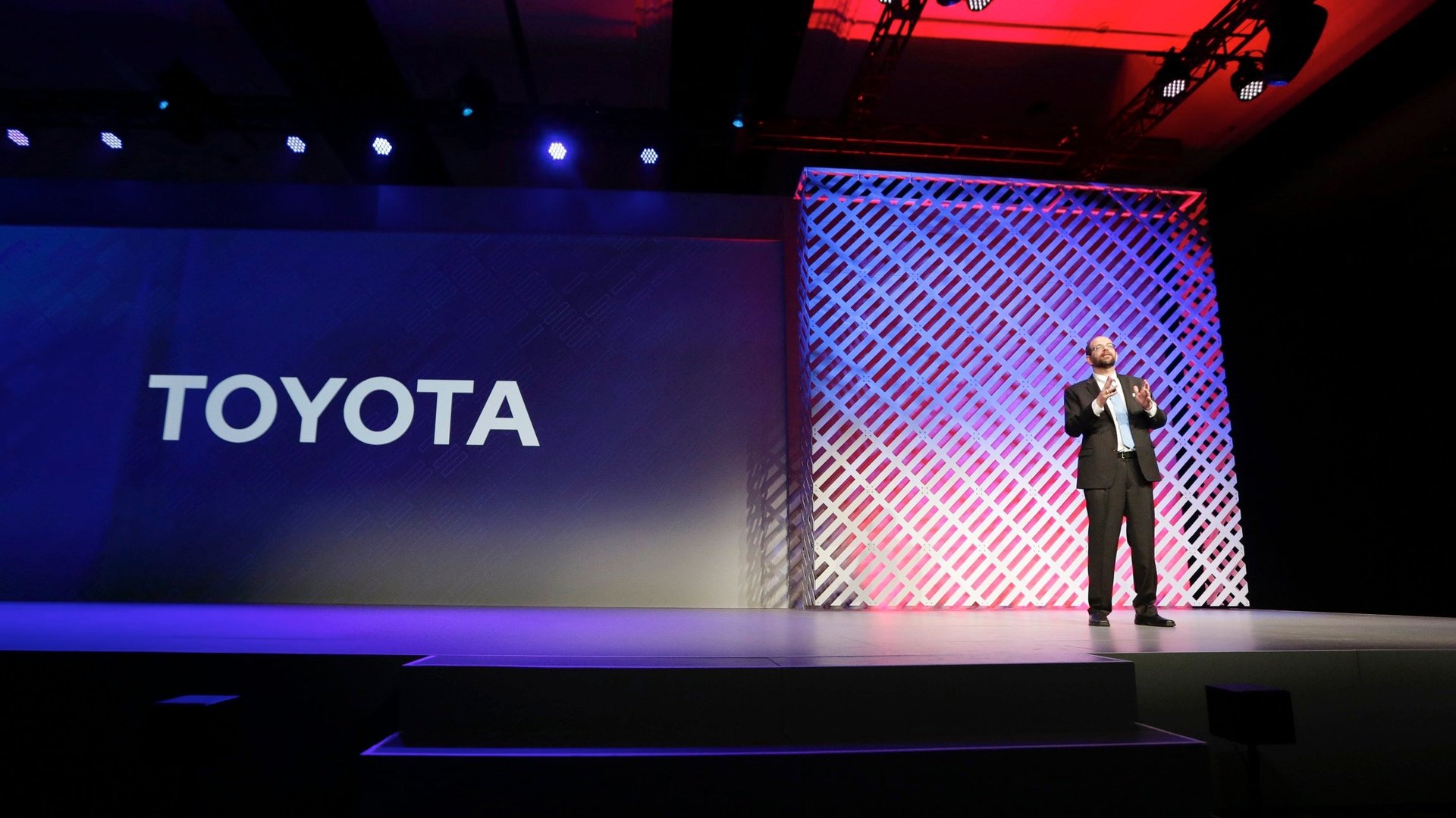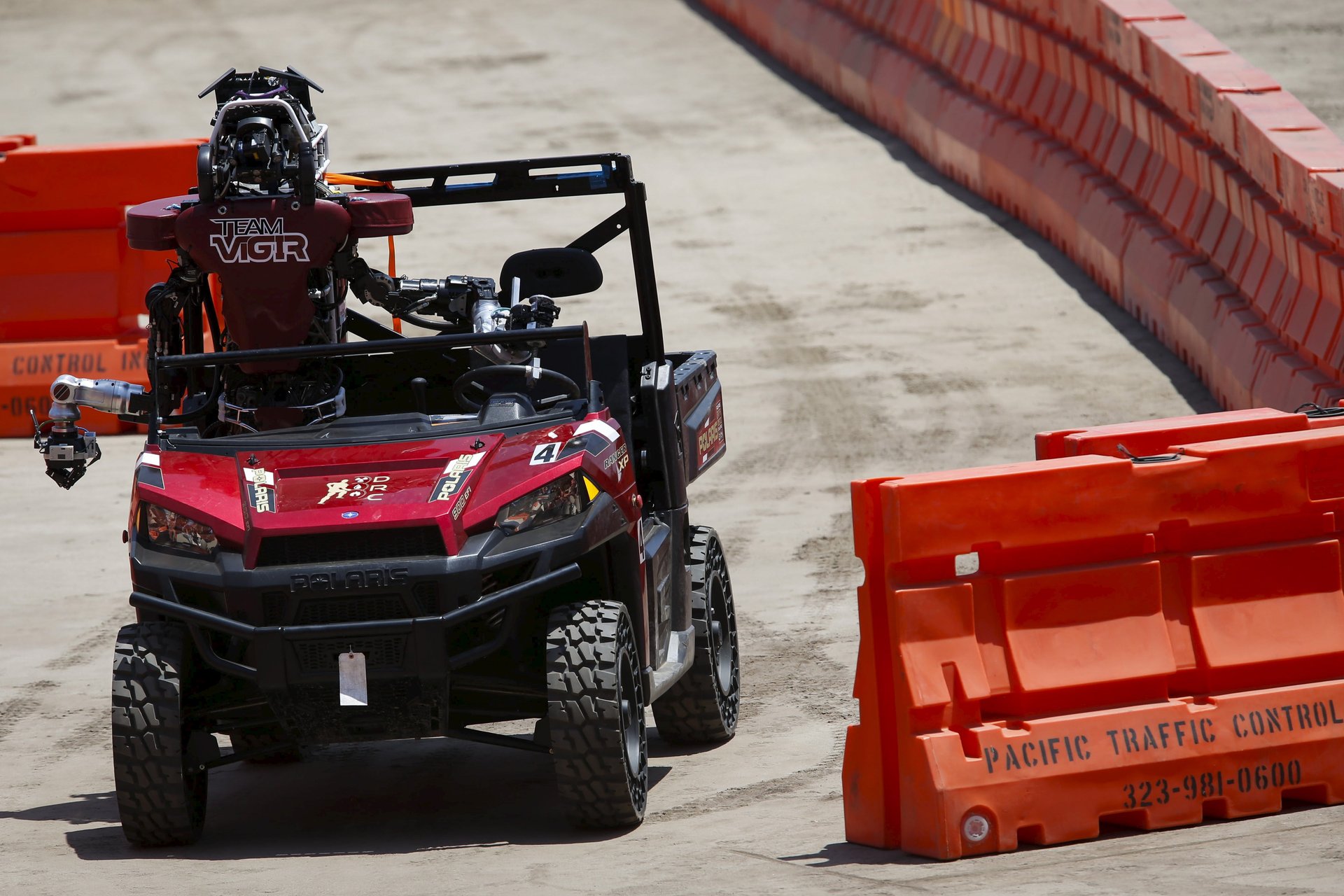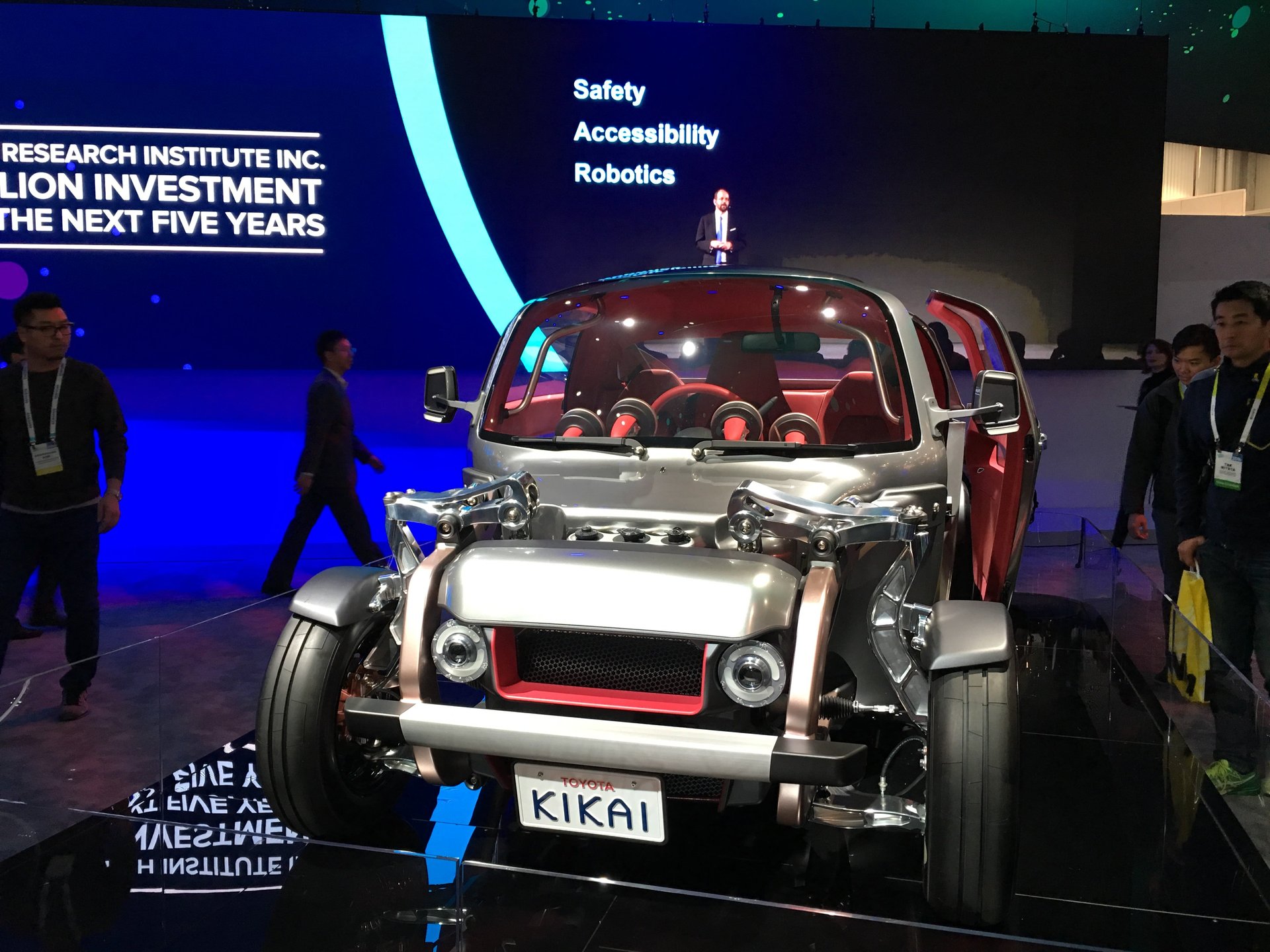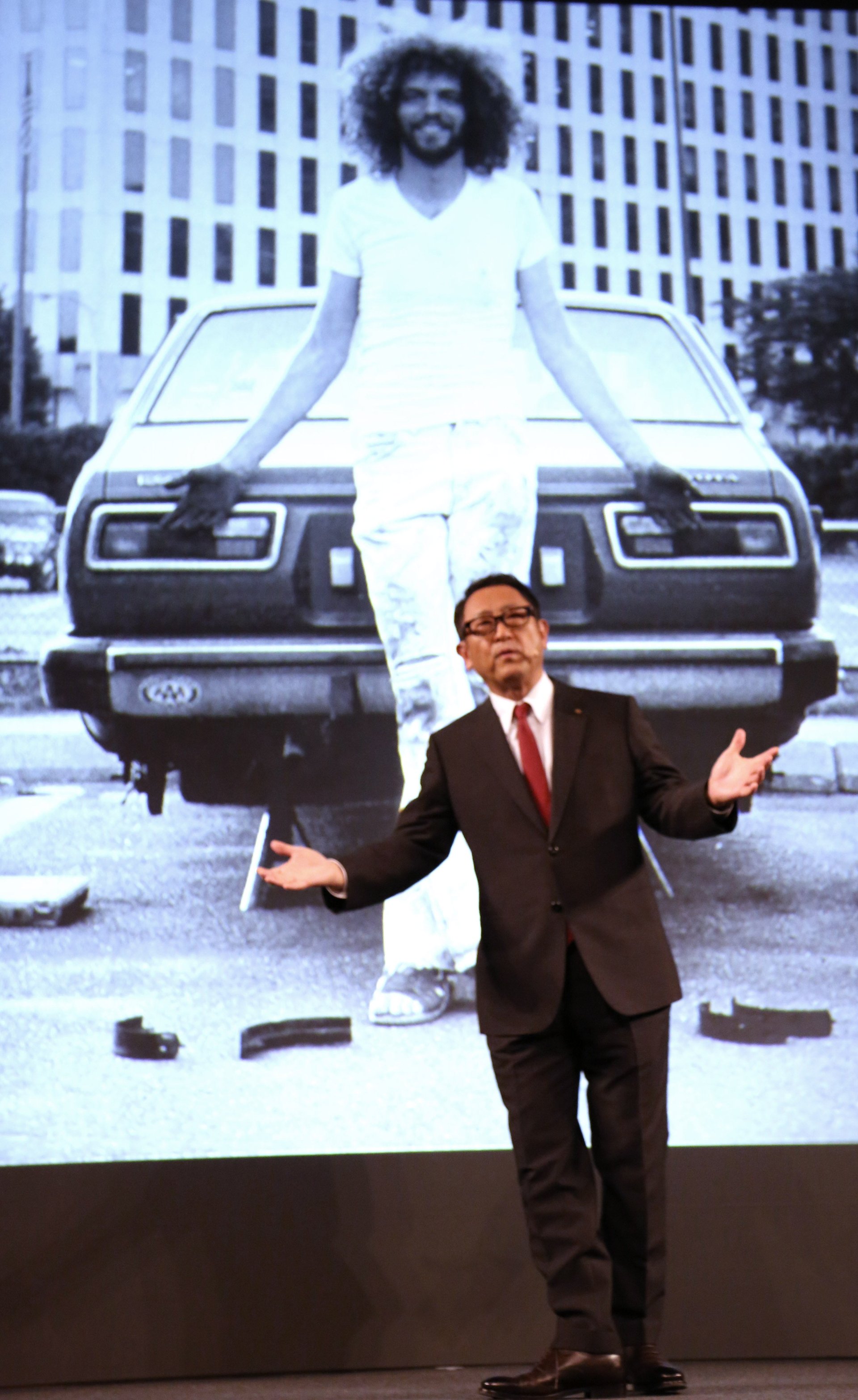The man that Toyota gave $1 billion to set up a robotics lab
The robots are coming—to save your life.


The robots are coming—to save your life.
Last summer, the Pentagon’s research division, DARPA, hosted a competition aiming to prove that robots could help save us in even the most dire of disaster situations. The robots fell over more often than European soccer players, but Gill Pratt, the man behind the competition, believes it won’t be long before robots are helping us around the home, and driving us to work.
So Toyota gave him $1 billion to prove it.
In November, the auto giant announced that Pratt would be leaving DARPA and joining the company as the CEO of a new research division, called Toyota Research Institute (TRI). He’s setting up two labs near MIT and Stanford, with some of the brightest people in AI and robotics research. His team will be using that $1 billion to build robots that aim to make the planet safer, that you’ll actually be able to buy. The lab’s first project: Building a car that can drive autonomously by 2020.
Quartz recently sat down with Pratt to discuss how he’ll set up the lab, his move from working for the US government to a Japanese institution, and when we’re likely to see self-driving cars and robots in our home. (This transcript has been edited for length and clarity.)
There are numerous challenges we need to overcome if we’re going to have intelligent robots or cars in the near future, but is there any one thing that you see that you think that once we’ve got this sorted, everything else will fall into line?
I think that it’s all about reliability. It’s all about reliability when the problem is incredibly difficult—when there’s snow, when there’s a bad sensor, when something really surprising occurs—all of the surprising things that might happen. It’s the rare cases that are going to be hard to deal with. Most driving is so easy that we can do it without thinking very much, so most people have had the experience that they leave some place, their mind is preoccupied with something, and suddenly they find themselves home: “How did I get there? I don’t even remember. But somehow, subconsciously, I just drove.” And that just speaks to the fact that most driving is not that hard. But some driving is intensely hard. That’s where we’re going to spend most of our effort.

Do you think that the issues ahead with robotics or self-driving cars are just as much societal as they are technological?
The legal system actually tends to reflect our sociological expectations. We have grown up, for whatever reason, as a society expecting machines to be flawless. So if a human being makes a mistake, and someone gets hurt, somehow we accept that. Around 30,000 people in the US lose their lives to cars each year. So you divide 30,000 by about 300 days in the year (plus or minus), and what do you come up with? 100 people every day. So if 100 people lost their lives in the US every day due to crime, due to terrorism, or accidents of any sort, the news would be going crazy. And yet 100 people every day lose their lives to cars and we somehow accept it. We’re going to introduce technology which will drastically lower the number of deaths per year that occur. But some of the time, when that technology is in charge, an accident will still occur. When that happens, how will people view the occasional accidents that do occur? And unfortunately right now—or perhaps, fortunately—we have incredibly stringent expectations of performance and reliability for anything that’s mechanical. And so the hardest part of the work we have to do is to develop technology that will work at that level of expected reliability.
It may be that what we need to do is to get society to understand that even though the overall statistics are getting tremendously better, that there are still occasions when the machine is going to be to blame, and we somehow need to accept that. Because if we stop using the new software, we won’t get the benefit of this drastic average reduction.

That goal of drastically reducing the number of fatalities in car accidents—was that a reason you chose to join Toyota?
Oh yeah. When I was a little kid, I unfortunately had to witness a fatal car accident. I was walking home and a small boy who was biking home, somehow ended up that he was biking on the street, and he was hit by a car and killed. And I saw it all in front of my eyes, and it was a profoundly disturbing thing. And I saw the driver of the car with his head in his hands, sitting down on a park bench across the street, just beyond grief with what had happened.
Now, whose fault was it? Was it the fault of the bicyclist that veered into traffic, or the guy that couldn’t hit the brakes fast enough because he didn’t expect it to occur? It doesn’t matter—it’s still an awful, awful thing. And I’ve always wanted to fix that.
How realistic is it to think that we will, in my lifetime, have useful robots in our homes?
I think it’s very likely. The Roomba, of course, is there now, but it just cleans the floor. But the need is so severe, it’s so great, that I think it’s extremely likely to occur. In 15 years, the aging society in the US will go from 13% over age 65 to 20%. The number of people that are retired will grow tremendously compared to what they are now. And, of course, the population of younger people to take care of them will go down. And if you think that’s bad, in Japan, the number’s going up to 40%. And so I think that need is going to push the development of technology to help people age in place and have a much more dignified old age. I can’t wait to see what we do with that. Furthermore, we have a number of technologies, mostly coming from cellphones, which can be brought to bear for this kind of stuff. I’m really looking forward to that.
Researchers I’ve spoken to have said that the idea of having human-shaped robots is fanciful. But why would we make robots that aren’t fit for a world that’s shaped for humans? Do you think the robots we’re going to have in our homes will be human-shaped?
My honest answer is that I don’t know. We’re exploring all possibilities. The human service robot, called HSR, that Toyota makes now that’s just a prototype, has an arm, so it can reach up and down. But it has a mobile base—it doesn’t have legs. And so what we do need is a machine that can get around in this environment we’ve designed for ourselves, and it’s true that the human form has a lot of complexities to it, including balance, and lots of degrees of freedom in all the joints—so it’s not clear that it’s the best form, but nor is it clear that it’s that much harder. What you saw at the Robotics Challenge was taxing these machines tremendously, by having terrible communication between the field and the person. In the future, the wifi in your home is going to work most of the time and cloud computing is going to help this sort of thing work very well. So I think that is likely to make that problem easier. The other thing is that the home is not nearly as bad as a pile of rubble you’re trying to walk across in a disaster, so I don’t think it really speaks that much to what makes the best machine within the home. I think cost is a huge part, too. How expensive is it to build a machine with all these joints versus something on a wheel base?
Cost is important for sure. Toyota makes luxury vehicles, but the majority of its cars are affordable. Is the goal for future Toyota robots to also make them similarly affordable?
What I love about Toyota is that we’re really good at making cheap things that are good. The Yaris, the Corolla, there’s all of these amazing, inexpensive cars that the technology from the Lexus trickles down to, and the quality is just as high. Of course, it doesn’t sound quite as nice, it’s not as fancy and all that sort of stuff, but the cost is quite low, the fuel economy is quite good, and they last forever. For the robotics field we need exactly the same thing. People want a machine that’s not a toy, but actually a long-term setup.

When it comes to the research that your team is doing, has Toyota said that it must have a clear path to commercialization, or will be it be more conceptual?
It’s not research for research’s sake. There’s many corporate labs that historically tend more toward the academic side—this is not like that at all—this is applied research. We have goals in mind that are actual consumer products. It’s not our job to do the final design, the engineering, manufacturing or sales. But we’re going to try to enable them to try to make those devices possible.
So there’s greater urgency than just publishing some research papers?
We’re not going to stop by saying a paper is the answer. The paper isn’t the goal; it’s to make products that actually make a difference in the quality of life.
Have you set yourself internal goals?
Toyota has announced a car called the Teammate Concept—we’re still not sure what the name of the car is going to be, but there will be some autonomous features on the car—and they’ve set a goal of announcing that car by 2020. And TRI’s goal is to enable that car, when it does come out, to actually have known reliability in certain environmental conditions. The traditional way that you do it is the same way that Thomas Edison did it in his day, which is you build it, you build it, you try it, and you go around and around. And unfortunately it’s ridiculously slow and hard to do. We have a number of scientific techniques we’re going to use to try to prove how this would work in a range of conditions, and try to figure that out.
How’s it been working for a company, rather than the government?
What was wonderful about working for DARPA—the people were amazingly smart and you’re working on something for making life more secure, that’s the sort of fundamental reason for the Department of Defense. It’s not about war—war only happens every so often—it’s about making life safer. The private sector doesn’t have that fixed social goal as its main goal, but Toyota in particular has the social good of mobility as its main goal. And so it’s kind of the same in that way. And the company has 330,000 employees—so it’s not quite the government of the US, but it’s getting there. But what they’ve done is set up TRI as an autonomous subsidiary with me as a CEO, and so we have a great degree of autonomy, in the same way DARPA has within the Department of Defense. And it was set up that way for the same reason, because the larger group takes a longer time to do things and is much more deliberate, and you want the smaller group to be a little scout that goes out looking for things to do. That’s our job: We are the scouts.